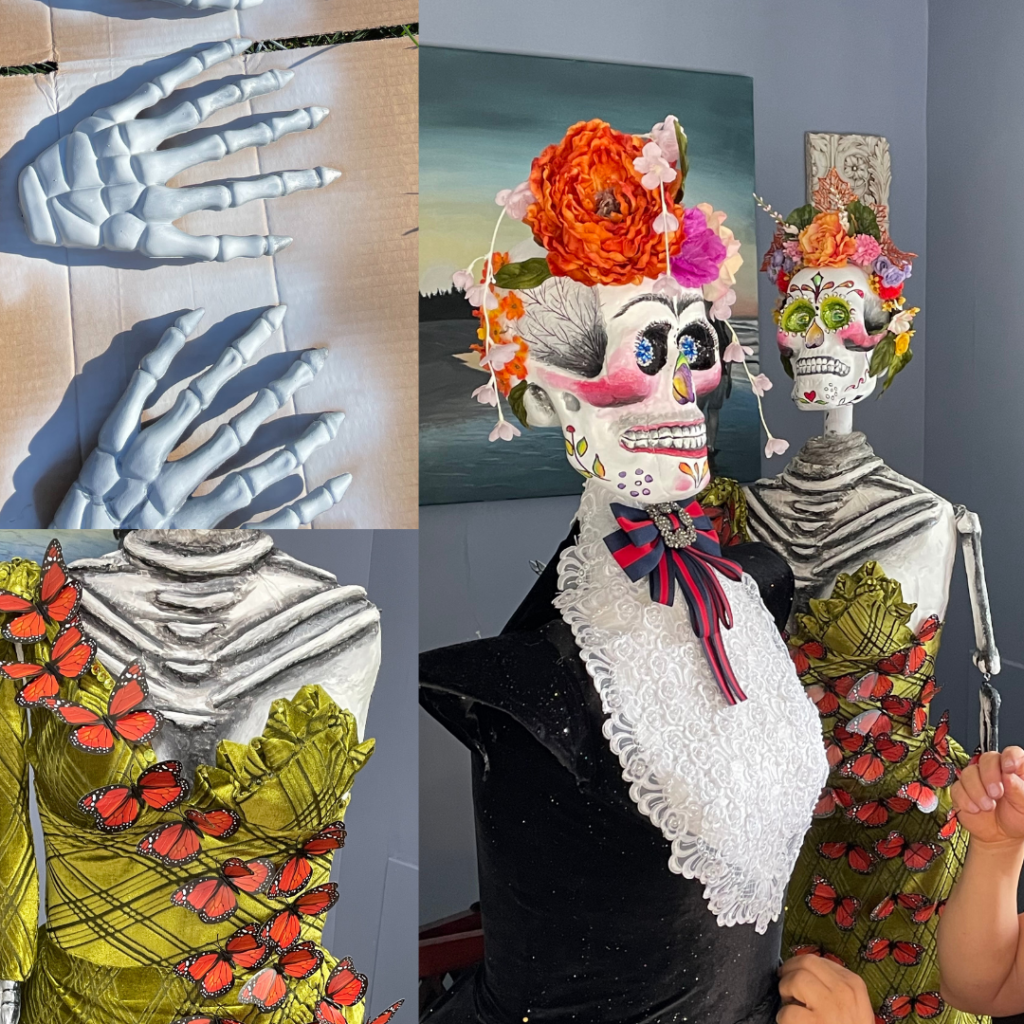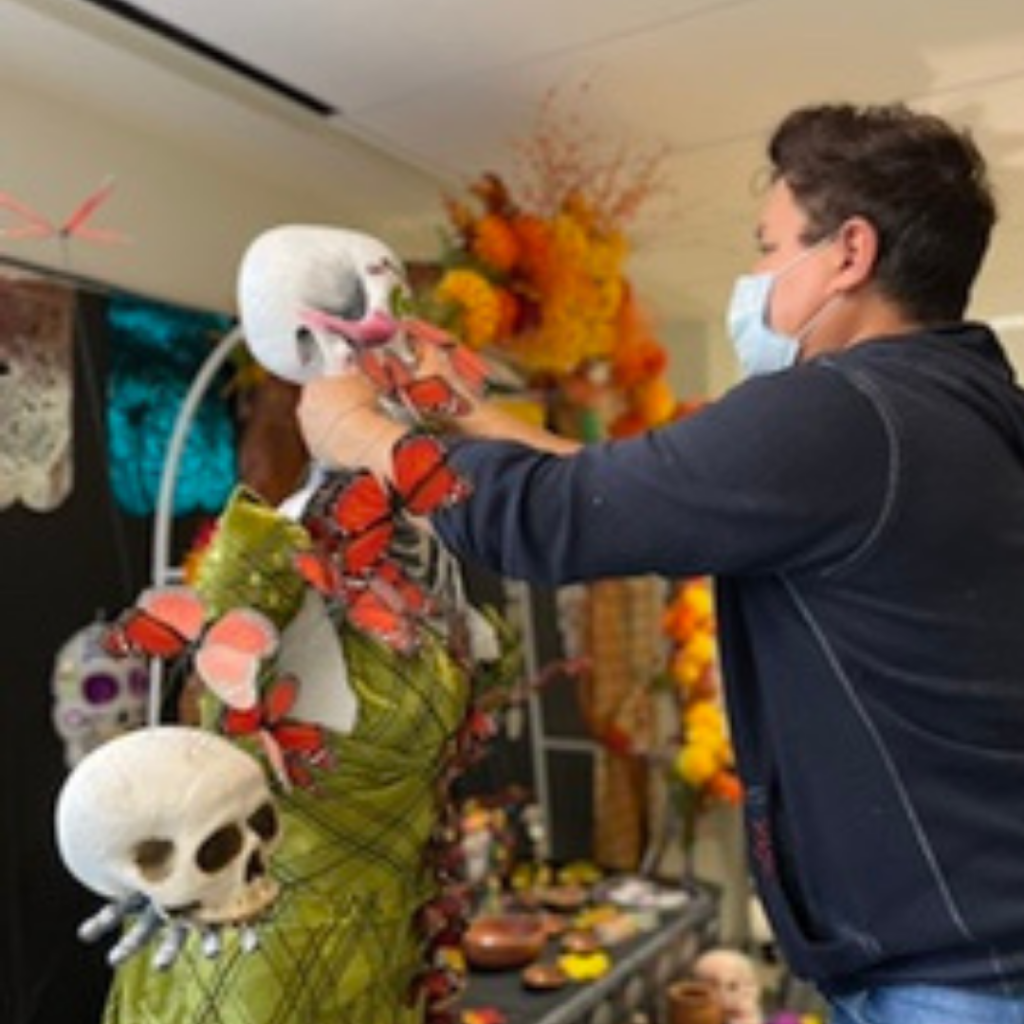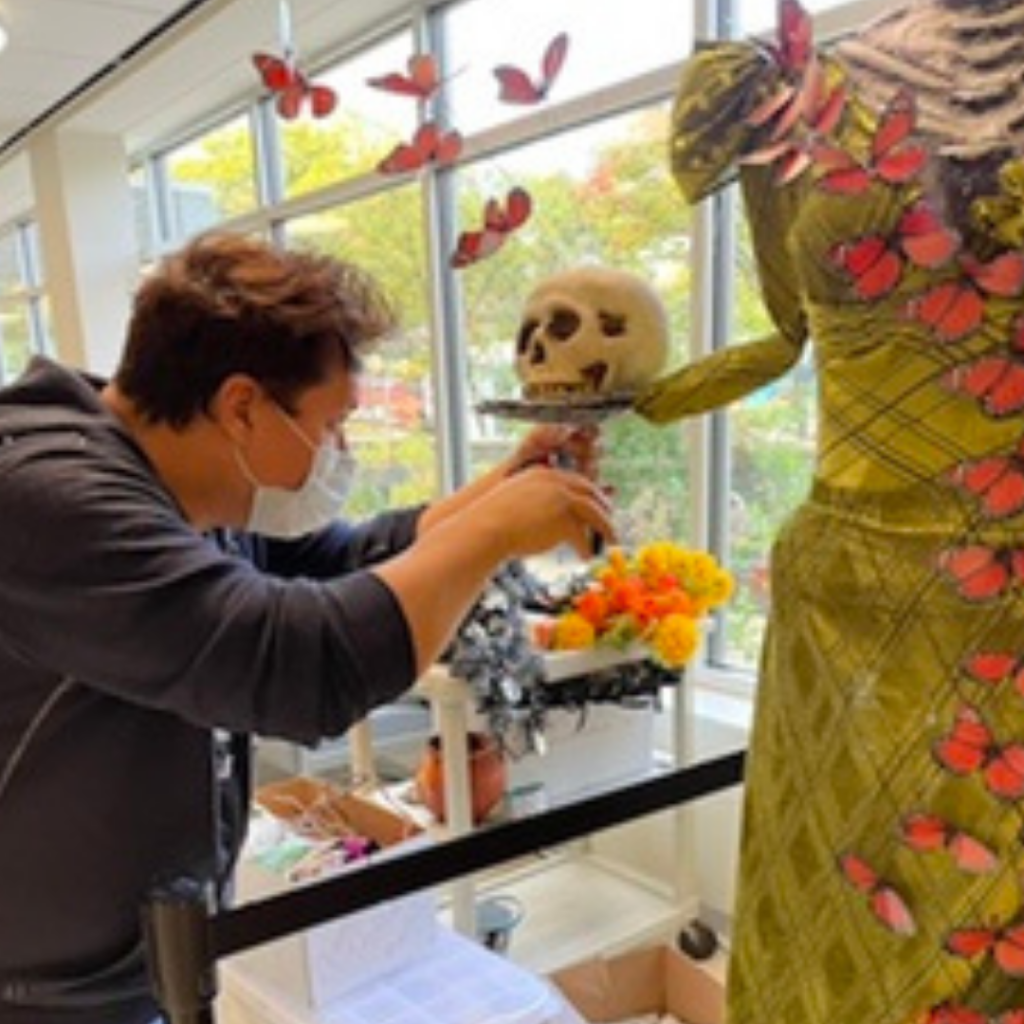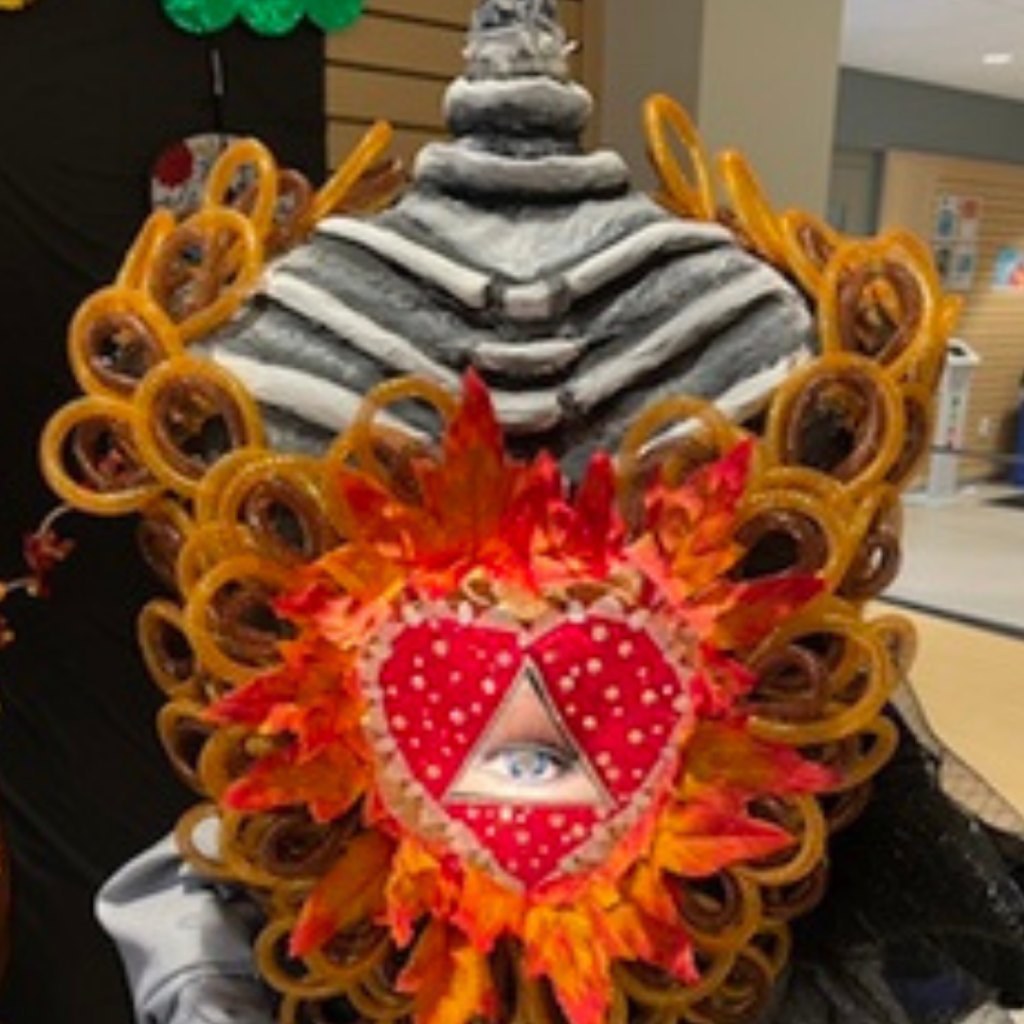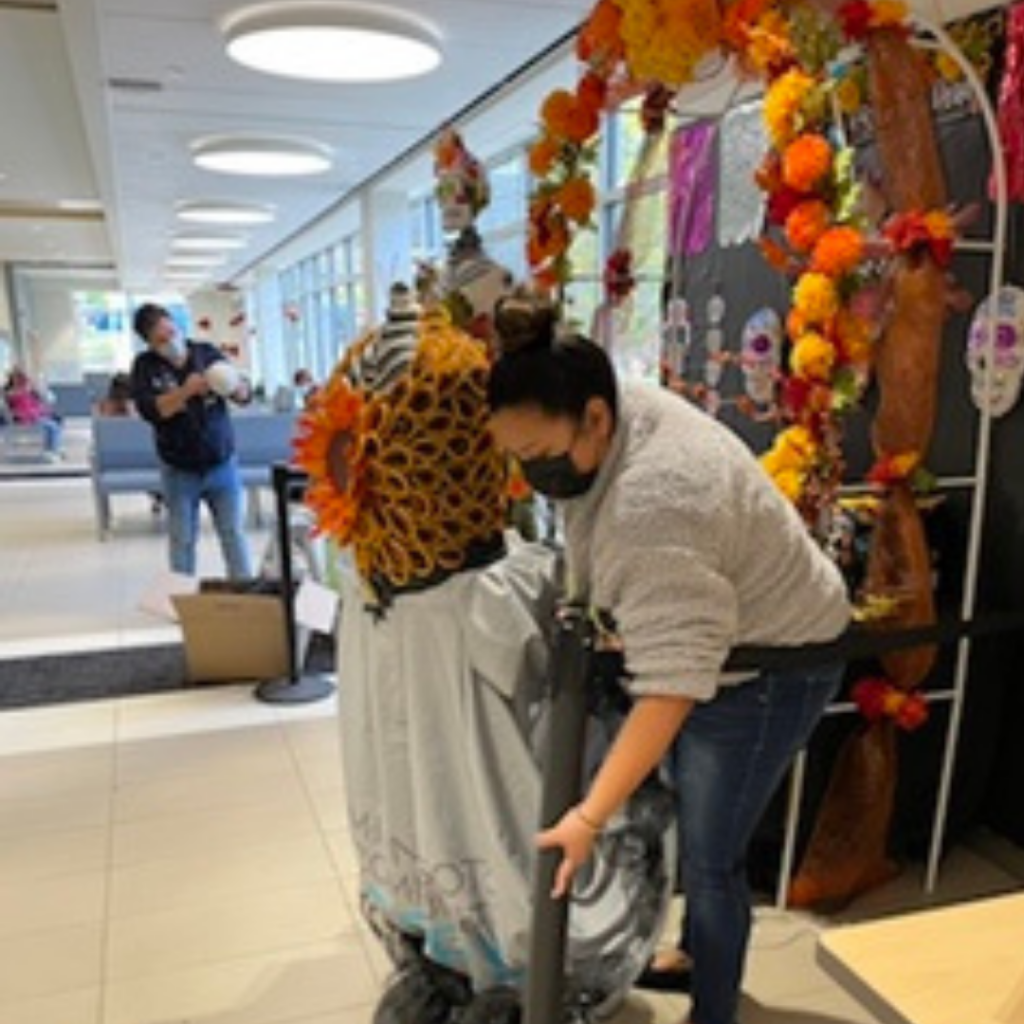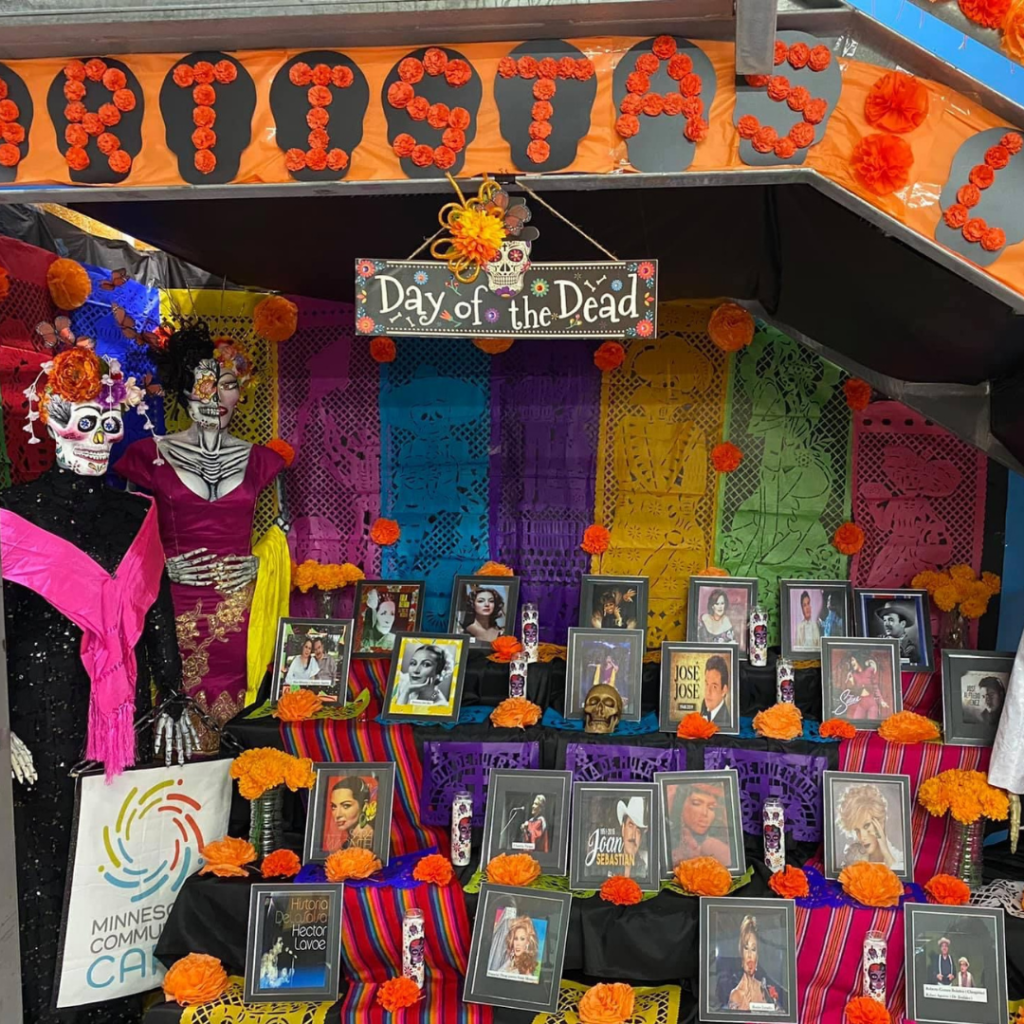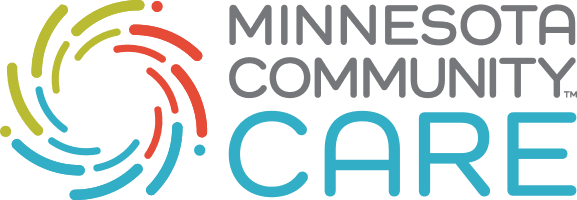The catrinas stand at 6 feet tall, featuring classic sugar skulls, face paint, and elegant dress. The artist, Mario Villeda Maldonado, is an HIV Health Educator at Minnesota Community Care, and has worked on the HIV Health Education and Outreach team since 2005. In 2019, Mario designed his first catrina for Día de los Muertos to display at La Clinica. This year, he’s crafting four different catrinas, to be placed at three locations in the Twin Cities, including La Clinica and East Side Clinic in Saint Paul and Plaza Mexico in Minneapolis.
The catrinas are skeletal figures, one of the most recognizable symbols of Día de los Muertos, or Day of the Dead. The annual celebration’s roots are in Mexico, though it’s celebrated throughout Latin America. Through lively festivals, food, and drink, Día de los Muertos is at its core an opportunity to honor the cycle of life through shared mourning and celebration.
Mario constructs his catrinas from paper and decorates them with various textiles and paints. Mario’s familiarity with ceramics and painting lend well to this process — his artistic background spans 30 years. His murals have appeared throughout Saint Paul, and he frequently collaborates with Gustavo Lira Garcia, the artist behind La Clinica’s new mural.
Mario was originally drawn to health promotion and outreach based on his years working at various bars in the Twin Cities area. “I’ve worked in almost every Latino bar in Minnesota, and worked at the first Latino bar with a drag show night,” says Mario. There, he focused his artistic talents on costume design and makeup.
The drag show quickly gained popularity, leading Minnesota Public Radio to reach out to Mario for an interview and feature. It was a telling moment when the interviewer asked “What is your dream?” Mario reflected on the prominence of HIV in the LGBTQIA+ Latino community. In that moment, he responded to the interviewer with clarity: he wanted to start an HIV prevention and treatment program for the Hispanic and Latino community in Minnesota.
Mario’s passion for health promotion in the Hispanic and Latino community led him to volunteer at Minnesota Community Care in 2003 — the clinic was originally founded in 1969 to support immigrant populations. In 2005, Minnesota Community Care founded the HIV Health Education and Outreach program, and Mario began as a full-time Health Educator on the team.
For Mario, the catrinas are a reminder and celebration of Mexican culture and tradition in Minnesota. Though Mario is originally from El Salvador, he explains: “I fell in love with Mexican culture, and have been there many times. I think it’s very important to respect every culture and celebrate Día de los Muertos in our community.”A fellow HIV Health Educator, Melissa Rodriguez, has supported Mario with this large undertaking. In addition to the catrinas, Mario’s ensuring that there’s a space on the altars for community members to place photos of loved ones who have died.
Minnesota Community Care’s HIV Health Education and Outreach program is also organizing an event for community members at La Clinica and East Side Clinic, including free champurrado and sweet bread from Maru’s Kitchen MN Food Truck, traditional candies, and free HIV testing. For more details on the event, visit our events page.
